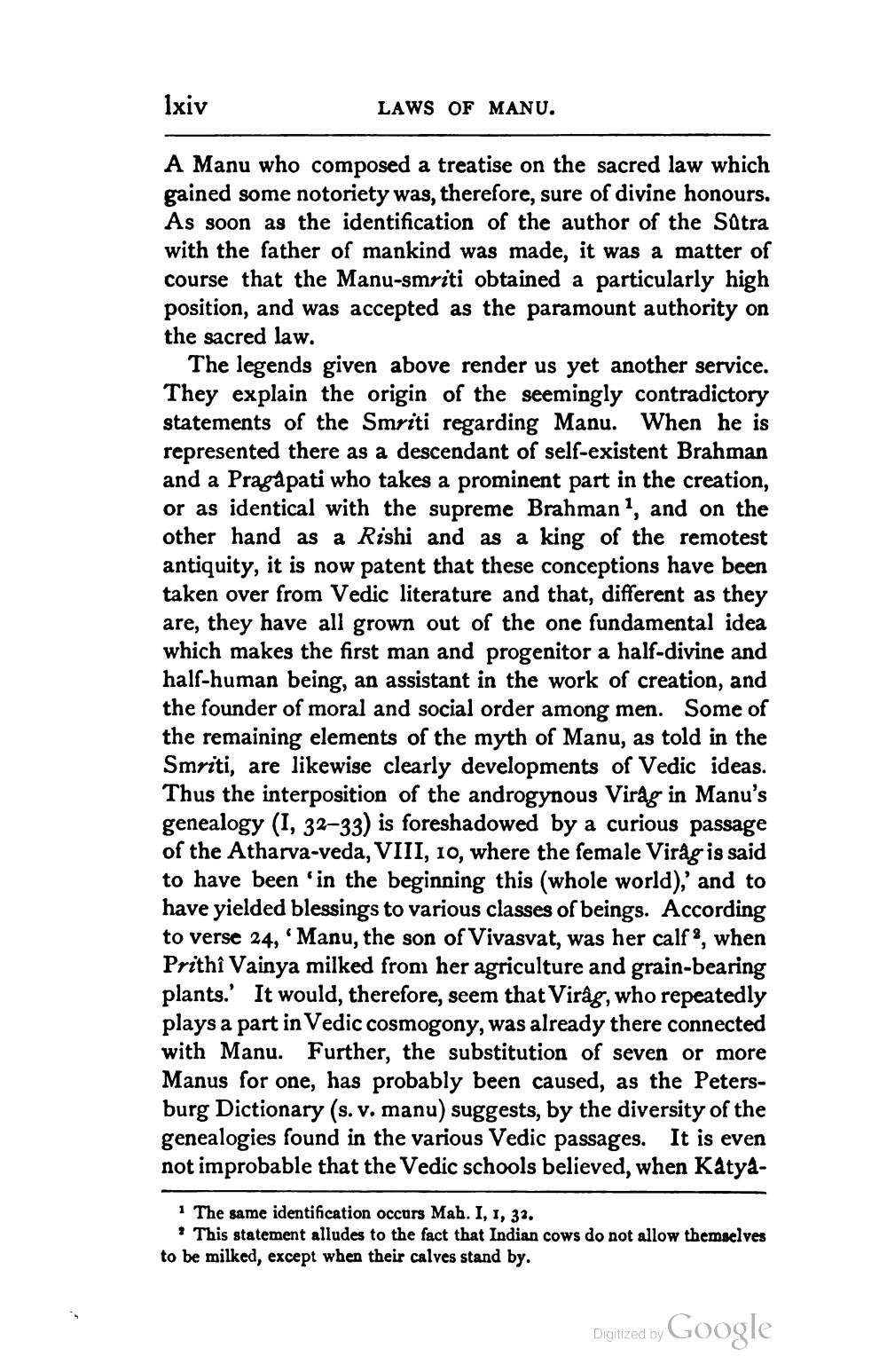________________
1xiv
LAWS OF MANU.
A Manu who composed a treatise on the sacred law which gained some notoriety was, therefore, sure of divine honours. As soon as the identification of the author of the Satra with the father of mankind was made, it was a matter of course that the Manu-smriti obtained a particularly high position, and was accepted as the paramount authority on the sacred law.
The legends given above render us yet another service. They explain the origin of the seemingly contradictory statements of the Smriti regarding Manu. When he is represented there as a descendant of self-existent Brahman and a Pragapati who takes a prominent part in the creation, or as identical with the supreme Brahman?, and on the other hand as a Rishi and as a king of the remotest antiquity, it is now patent that these conceptions have been taken over from Vedic literature and that, different as they are, they have all grown out of the one fundamental idea which makes the first man and progenitor a half-divine and half-human being, an assistant in the work of creation, and the founder of moral and social order among men. Some of the remaining elements of the myth of Manu, as told in the Smriti, are likewise clearly developments of Vedic ideas. Thus the interposition of the androgynous Virág in Manu's genealogy (1, 32–33) is foreshadowed by a curious passage of the Atharva-veda, VIII, 10, where the female Virág is said to have been in the beginning this (whole world), and to have yielded blessings to various classes of beings. According to verse 24, ‘Manu, the son of Vivasvat, was her calfs, when Prithi Vainya milked from her agriculture and grain-bearing plants.' It would, therefore, seem that Virág, who repeatedly plays a part in Vedic cosmogony, was already there connected with Manu. Further, the substitution of seven or more Manus for one, has probably been caused, as the Petersburg Dictionary (s. v. manu) suggests, by the diversity of the genealogies found in the various Vedic passages. It is even not improbable that the Vedic schools believed, when Katya
· The same identification occurs Mah. I, 1, 32.
* This statement alludes to the fact that Indian cows do not allow themselves to be milked, except when their calves stand by.
Digitized by Google




